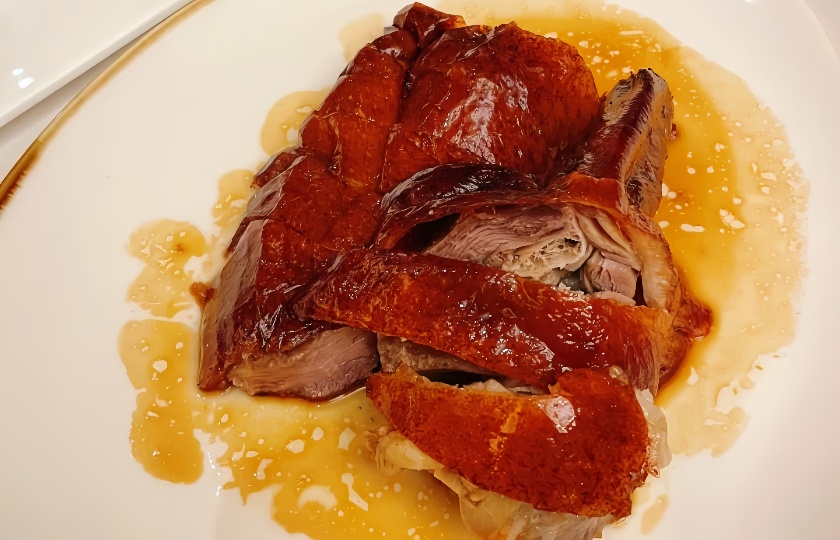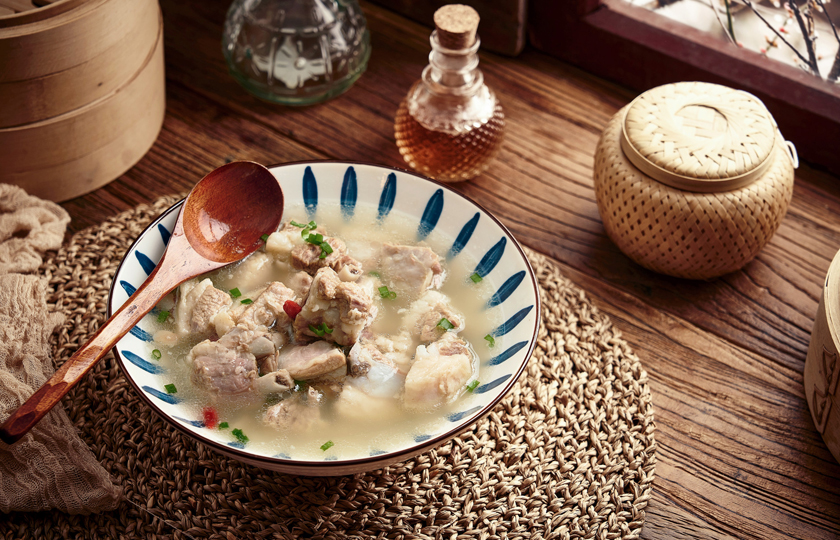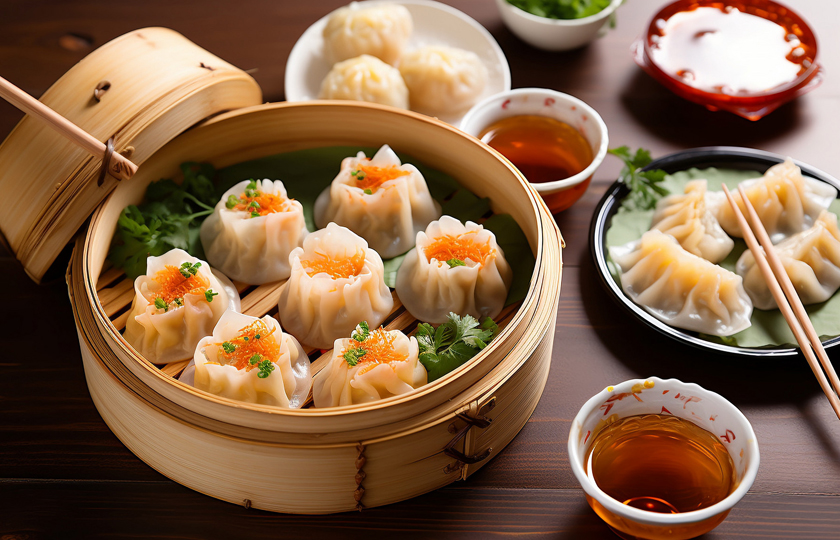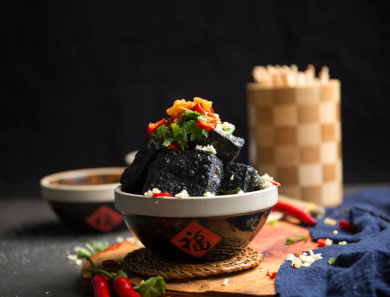Taste Trait Exploration: Why Isn't Cantonese Food Spicy?
In the vast world of delicacies, Cantonese cuisine stands out. However, as for "why Cantonese cuisine is not spicy", is it due to the climate, the ingredients, or the unique flavor nurtured by cultural traditions?
Climatic factors
Guangdong is located in the subtropical zone with a hot and humid climate. The human body is prone to getting excessive internal heat. As peppers are hot in nature, eating spicy food is more likely to cause excessive internal heat. Therefore, in the long-term dietary practice of Cantonese people, peppers are seldom chosen as the main seasoning.
Central Plains dietary culture inheritance
Cantonese cuisine originates from the Central Plains and inherits the dietary style advocated by Confucius of "There is no end to enjoying delicate food and fine minced meat." It emphasizes the fine processing of ingredients and the exquisite application of cooking techniques, and pursues a light and delicious taste. Peppers are not the main seasonings in traditional Central Plains cuisine. This dietary culture tradition is preserved and developed in Cantonese cuisine.
Abundant food resources
Guangdong is rich in products and has diverse food materials, including a large number of delicious river fish, seafood, meat, fruits and vegetables. These food materials themselves have delicious tastes. When cooking, there is no need to use peppers to cover up or add flavors. Chefs pay more attention to showing the original flavors of food materials.
Time of pepper introduction and planting habits
Peppers are imported products. After being introduced into China from Europe, the regions where peppers were first planted in large quantities were areas like Yunnan, Guizhou and Sichuan. Pepper was also first recorded in recipes in these places. At that time, crops like sweet potatoes were mostly planted in Guangdong, and there is no history of extensive planting of peppers. Therefore, peppers did not become the main cooking ingredient in the early stage of the formation of Cantonese cuisine.
Influence of regional dietary exchanges
Although dietary cultures of different regions have exchanged over time, Cantonese cuisine has already formed its own unique style and taste system during its development process and has its fixed audience. At the same time, the commercial trade in Guangdong is developed, making the local dietary culture pay more attention to the original flavors of food materials and fine cooking to meet the taste needs of people from different regions. Therefore, it has not been influenced too much by spicy dietary cultures.
Why is Cantonese food so sweet?
The reason why Cantonese cuisine gives people an impression of sweetness mainly stems from its regional characteristics and dietary habits. Guangdong has a hot and humid climate. The human body is prone to sweating, and sugar is lost quickly. Therefore, Cantonese people prefer sweet foods to supplement energy.
Cantonese cuisine emphasizes the original flavor of ingredients and has a light seasoning. A small amount of sugar is more prominent in the light taste.
In addition, Cantonese cuisine often uses sweet ingredients such as candied dates and coconuts, as well as sweet sauces such as honey sauce and sweet and sour sauce, further adding to the sweetness of dishes.
The sugar water culture in Guangdong is also an important manifestation of the sweetness of Cantonese cuisine. The combination of various ingredients and sugar water not only retains the flavor of ingredients but also adds a sweet taste. These factors together constitute the unique sweet characteristics of Cantonese cuisine.

What does Cantonese food taste like?
Cantonese cuisine has a light and delicious taste and focuses on highlighting the original flavor of ingredients. It emphasizes being clear without being bland, fresh without being vulgar, tender without being raw, and oily without being greasy.
Cantonese cuisine has a wide variety of seasonings, including soy sauce chicken sauce, fermented red beancurd paste, honey sauce and many other sauces, with rich and diverse flavors.
At the same time, Cantonese cuisine has diverse cooking techniques, including stewing, steaming, boiling, stir-frying, frying and other methods, which can fully show the deliciousness and nutrition of ingredients.
On the whole, Cantonese cuisine has a taste that is both light and rich in layers.
What is a famous Cantonese dish?
As a Cantonese cuisine enthusiast and food blogger, let me share some of the most famous dishes in Cantonese cuisine!
Boiled Shrimp
This dish is a prime example of the fresh flavors in Cantonese cuisine. Fresh shrimp are quickly boiled to retain their tender and sweet taste. The key is to boil them just right so they don't get tough. Serve with a dipping sauce made of soy sauce and sesame oil, and you'll taste the ocean's freshness in every bite.
Steamed Pork Ribs with Black Bean Sauce
This is a classic steamed dish. Tender pork ribs are marinated with black beans, garlic, and soy sauce, then steamed until juicy. The black bean flavor seeps into the ribs, making them incredibly savory and flavorful. Each bite is a delightful mix of meat and rich black bean sauce.
Cantonese Roasted Meats
Roasted meats hold a special place in Cantonese cuisine. Take roasted goose, for example. The goose is marinated with special spices, then roasted over fruitwood. The skin becomes crispy and golden, while the meat stays juicy and tender, with a hint of fruitwood aroma. Char siu (barbecue pork) is another favorite, known for its tender texture and sweet glaze. The balance of sweet and savory is just perfect.
Steamed Fish
Fresh fish, like sea bass, is scored and topped with ginger and scallions, then drizzled with hot oil and steamed soy sauce. This method preserves the fish's natural flavor, making the meat delicate and melt-in-your-mouth. The sauce is also incredibly tasty, making this dish a true classic.
Chaozhou Beef Balls
These are a signature dish from the Chaozhou region. Made from fresh beef that's pounded until springy, these beef balls are delightfully bouncy and juicy. Whether in soup or hot pot, they're a real treat. Bite into one, and you'll be greeted with a burst of savory beef juice that's incredibly satisfying.
Slow-Cooked Soups
Cantonese soups are legendary. Take coconut chicken soup, for instance. Fresh coconut water and chicken are simmered together, often with dates and goji berries added for extra flavor. The result is a rich, nourishing broth that's both sweet and savory. Each sip feels like a warm hug for your body.
These dishes not only highlight the importance of fresh ingredients in Cantonese cuisine but also showcase the meticulous cooking techniques and unique flavors that make it so special. Each dish offers a glimpse into the heart of Cantonese culinary tradition.

What is so special about Cantonese?
Today, I'd love to talk about what makes Cantonese cuisine so special. As a die-hard fan of Cantonese food, I have plenty to share!
Respect for the Natural Flavor of Ingredients:
Cantonese cuisine is like a stage where the ingredients are the stars. The chefs meticulously select the freshest and highest quality ingredients. When you visit a market, you'll see Cantonese chefs choosing seafood that’s still lively and shrimp that are crystal clear. This rigorous selection process ensures that every dish is a true representation of nature’s bounty. Take steamed fish, for example. It’s simply garnished with ginger and scallions, and a splash of soy sauce, allowing the fish’s natural flavor to shine. The tender, succulent fish feels like it’s dancing on your tongue, showcasing the essence of the sea.
Rich Flavor Philosophy:
The seasoning in Cantonese cuisine isn’t just about piling on flavors; it’s about achieving a delicate balance. Basic seasonings like salt, sugar, and soy sauce are used with precision, while unique local condiments like oyster sauce and fish sauce are skillfully incorporated. For instance, in a dish like stir-fried lettuce with oyster sauce, the savory richness of the oyster sauce perfectly complements the crisp sweetness of the lettuce, turning a simple vegetable into something extraordinary. Each dish has its own flavor focus, whether it’s salty, sweet, or a harmonious blend of both, ensuring a well-rounded taste experience.
Exquisite Knife Skills:
The knife skills in Cantonese cuisine are nothing short of art. Chefs handle ingredients with the precision of artists. Whether it’s cutting chicken into uniform cubes for fried rice or carving radishes into intricate floral garnishes, the skill level is impressive. Take Peking duck, for example. The duck is sliced with such precision that each piece is uniformly thin, ensuring that when wrapped with a pancake, scallions, cucumber, and sweet bean sauce, the texture is perfect. Every bite offers a delicate balance of crispy skin and tender meat.
Emphasis on Health and Nutrition:
Cantonese cuisine places a strong emphasis on health and nutrition. Many dishes are designed with nutritional balance in mind. Soups are a prime example, like a broth made with pork bones, corn, and carrots. It’s not only delicious but also packed with protein, vitamins, and other nutrients. The cooking methods often involve less oil and mild flavors, aligning with healthy eating principles. This way, diners can enjoy the food while also nourishing their bodies.
These aspects make Cantonese cuisine a delightful culinary experience, with each detail worth savoring.
Which Chinese cuisine is the spiciest?
When it comes to spicy Chinese cuisine, a few dishes stand out as the spiciest. Let’s dive into some of the most fiery options!
Mao Xue Wang from Sichuan Cuisine:
Mao Xue Wang is like a spicy party in a bowl, featuring ingredients like duck blood, beef tripe, and eel. The key to this dish is the vibrant red broth, made from an abundance of dried chili peppers, Sichuan peppercorns, and various spices. Each piece of duck blood soaks up the spicy broth, melting in your mouth while the heat quickly spreads across your palate. The beef tripe, after a quick dip in the boiling broth, becomes tender yet crunchy, delivering a burst of numbing spiciness that feels like a fiery kiss on your tongue. Some restaurants even add special chili oil to elevate the heat, making it so spicy that it might bring tears to your eyes.
Kou Wei She from Hunan Cuisine:
Another contender is Kou Wei She, or Spicy Snake, from Hunan cuisine. The snake meat is firm and chewy, absorbing the intense flavors of chili, star anise, cinnamon, and other spices. The local Hunan chilies pack a powerful punch, igniting a fiery sensation that starts at your tongue and burns all the way down your throat. The heat lingers, making you gasp for air, yet you can’t resist reaching for another bite.
Chongqing Hot Pot:
Chongqing hot pot is a unique and thrilling spicy experience. The base comes in varying levels of spiciness: mild, medium, and extra hot. Even the mild version can be a challenge for those not accustomed to spicy food. The broth, rich with beef tallow, is filled with a sea of chili peppers and Sichuan peppercorns. As the broth boils, you dip in ingredients like beef tripe, duck intestines, and pork aorta, each bite absorbing the robust, layered heat and the aroma of the beef tallow. The spiciness builds gradually, drawing you into a vortex of fiery delight where the more you eat, the spicier it gets, and the spicier it gets, the more you want to eat.
While it’s hard to declare a single dish as the spiciest since everyone’s tolerance varies, these dishes are sure to satisfy your craving for heat.
























